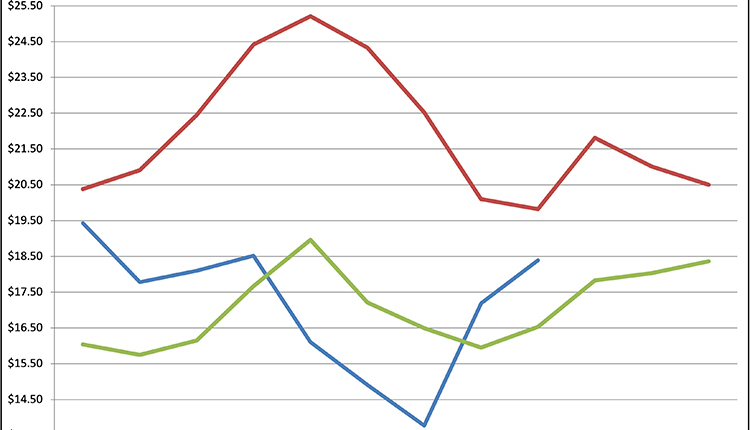 by Amanda Smith, Associate Editor
by Amanda Smith, Associate EditorImmediately after weaning, calves are kept on a starter-based diet. The jury is still out, though, on when calves should begin to receive forage and how much should be offered.
"Rumen development likely continues postweaning, and during this time, heifers can digest grain sources more efficiently than forages," noted Tamilee Nennich, formerly with Purdue University.
Research shared at the Tri-State Dairy Nutrition Conference showed that continuing to feed diets containing a higher level of grain and concentrates improved average daily gain and growth while reducing cost per pound of gain postweaning.
Heifers began the study when they were approximately 330 pounds and 4.5 months of age. They were assigned to diets containing 80, 60 or 40 percent concentrate for 56 days. At that point, they were abruptly switched to a common 40 percent concentrate diet.
Elevating grain inclusion from 40 to 80 percent of dry matter resulted in a linear gain in body weight. Total body weight gain during the treatment period averaged 76.8, 104.9 and 136 pounds for heifers fed 40, 60 and 80 percent concentrate diets, respectively. During the period on the common diet, total gain averaged 108.2, 106.9 and 96.4 pounds, respectively.
Average daily gain (ADG) was improved overall for heifers fed an 80 percent concentrate diet during the treatment period. But, abrupt shifts to higher forage diets can negatively impact heifers initially fed high grain levels. Those on the 80 percent concentrate diet showed a definite decline in intake when they switched to a 40 percent concentrate diet.
Effects of heightening grain inclusion,
followed by rapid switch to a common diet:

Feed costs averaged 11, 12 and 13 cents per pound of dry matter intake for heifers fed the 40, 60 and 80 percent concentrate diets, respectively. Feed costs per head were greater for the 80 percent concentrate diet, while feed cost per pound of ADG were lowest for heifers on the 60 percent concentrate diet.
When heifers were fed the 60 or 80 percent concentrate diet during the treatment period, a savings of 24 cents per 0.22 pounds of ADG was seen compared to heifers fed the 40 percent concentrate diet. Feeding higher grain levels to postweaned heifers can improve growth and reduce the cost of gain over higher forage diets.
(c) Hoard's Dairyman Intel 2015
May 4, 2015










